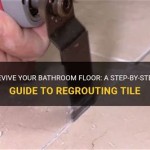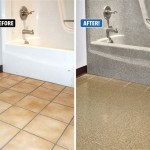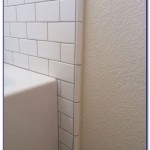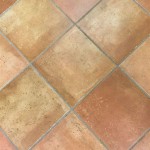How To Install Laminate Flooring Over Asbestos Tile
Installing new flooring can dramatically improve the aesthetics and value of a property. However, many older homes contain asbestos floor tiles. Disturbing these tiles during a flooring renovation can release harmful asbestos fibers into the air, posing a significant health risk. Encapsulating the asbestos tiles by installing laminate flooring over them is often a safer and more cost-effective alternative to asbestos removal. This article provides a detailed guide on how to safely and effectively install laminate flooring over existing asbestos tiles.
Before embarking on this project, it is crucial to understand the nature of asbestos and the potential hazards it presents. Asbestos is a naturally occurring mineral fiber that was widely used in building materials due to its heat resistance, strength, and affordability. However, prolonged exposure to asbestos fibers can lead to serious respiratory illnesses, including asbestosis, lung cancer, and mesothelioma. Therefore, it is paramount to minimize disturbance to the asbestos tiles throughout the installation process.
This method outlines safe covering of the floor using laminate flooring. No method can guarantee 100% safety from the hazards of Asbestos. Professionals should be consulted if there is any doubt.
Preparation is Key: Assessing the Situation and Gathering Materials
The initial stage of installing laminate flooring over asbestos tiles involves a thorough assessment of the existing floor and the careful gathering of necessary materials. A visual inspection of the asbestos tiles is essential. Look for signs of damage, such as cracks, chips, or loose tiles. If the tiles are significantly damaged, encapsulation may not be the best option, and professional asbestos abatement might be required. Consult with a qualified asbestos professional for guidance in such cases.
Next, it is important to determine the type of asbestos tile present. While visual identification can be challenging, most asbestos floor tiles were manufactured in 9x9 inch or 12x12 inch sizes. Knowing the size can help confirm their potential asbestos content. However, a laboratory test is the only definitive way to determine if a tile contains asbestos. Sending a sample to a certified asbestos testing lab is a prudent step, especially if there is uncertainty.
Once the condition of the tiles is assessed and their asbestos content is either confirmed or strongly suspected, gather the necessary materials for the laminate flooring installation. This includes the laminate flooring itself, an underlayment specifically designed for use over hard surfaces, a vapor barrier (if the subfloor is concrete or has moisture concerns), measuring tools, a tapping block, a pull bar, a saw (circular saw, jigsaw, or laminate cutter), safety glasses, a dust mask or respirator (N95 or higher rating), duct tape, and plastic sheeting.
Selecting the right underlayment is crucial for a successful installation. The underlayment provides a smooth, even surface for the laminate flooring, absorbs sound, and can help to insulate the floor. Choose an underlayment that is specifically designed for use over hard surfaces like tile. Some underlayments also have a built-in vapor barrier, which is essential for protecting the laminate flooring from moisture coming up from a concrete subfloor.
Safety is paramount. Even though the goal is to minimize disturbance, it is still important to take precautions to prevent the release of asbestos fibers. Wear safety glasses to protect your eyes from dust and debris. A dust mask or respirator (N95 or higher rating) is essential for filtering out any potential asbestos fibers that may become airborne. Using duct tape to seal seams in the plastic sheeting used for covering the work area is also vital. This creates a barrier to contain any potential asbestos dust.
Before starting, ensure the existing floor is clean. Vacuum the floor thoroughly using a HEPA (High-Efficiency Particulate Air) filter vacuum cleaner. A standard vacuum cleaner can recirculate asbestos fibers into the air, so a HEPA filter vacuum is crucial for capturing and containing these microscopic particles. After vacuuming, wipe the floor with a damp mop to remove any remaining dust or debris.
Finally, ensure that you have enough laminate flooring to cover the entire area. It is generally recommended to purchase at least 10% more flooring than the actual square footage of the room to account for cuts, waste, and potential mistakes. Laying out the flooring in advance, known as a dry run, can help you visualize the final layout and identify any potential issues before you begin the actual installation.
The Installation Process: Encapsulating the Asbestos Tiles Safely
The installation process begins with protecting the surrounding area. Seal off the room with plastic sheeting, taping it securely to the walls, doors, and any other openings to prevent asbestos fibers from spreading to other parts of the house. This creates a contained work environment, minimizing the risk of contamination.
Next, install the vapor barrier (if needed). If the subfloor is concrete or there is a concern about moisture, roll out the vapor barrier over the asbestos tiles, overlapping the seams by at least 6 inches and taping them securely with moisture-resistant tape. This barrier will prevent moisture from migrating up into the laminate flooring, which can cause warping and damage over time.
Once the vapor barrier is in place (if required), install the underlayment. Roll out the underlayment over the asbestos tiles, following the manufacturer's instructions. Some underlayments have a self-adhesive backing, while others require taping the seams together. Ensure that the underlayment is smooth and flat, providing a level surface for the laminate flooring.
Now, begin installing the laminate flooring. Start in a corner of the room and work your way across. Follow the manufacturer's instructions for the specific type of laminate flooring you are using. Most laminate flooring systems use a tongue-and-groove locking mechanism, which allows the planks to snap together easily. Use a tapping block and a pull bar to ensure that the planks are tightly joined and that there are no gaps between them.
When cutting laminate flooring, use a saw that is designed for this purpose, such as a laminate cutter, a circular saw with a fine-tooth blade, or a jigsaw. Always wear safety glasses and a dust mask or respirator when cutting laminate flooring to protect yourself from dust and debris. Make sure that your work area has proper ventilation.
Continue installing the laminate flooring until the entire room is covered. Remember to leave an expansion gap of approximately ¼ inch around the perimeter of the room to allow for the natural expansion and contraction of the flooring due to changes in temperature and humidity. This gap will be covered by baseboards or quarter-round molding. If you have pipes or other obstructions, carefully cut the laminate flooring to fit around them, leaving a small gap for expansion.
After the laminate flooring is installed, install baseboards or quarter-round molding around the perimeter of the room to cover the expansion gap and give the floor a finished look. Use nails or adhesive to secure the baseboards or molding to the wall.
Post-Installation Cleanup and Disposal: Minimizing Further Risk
After the laminate flooring is installed, a thorough cleanup is essential to minimize the risk of asbestos exposure. Carefully remove the plastic sheeting that was used to seal off the room, folding it inwards to encapsulate any dust or debris. Seal the folded plastic sheeting with duct tape and dispose of it properly according to local regulations for asbestos-containing waste. Do not reuse the plastic sheeting.
Vacuum the entire room thoroughly with a HEPA filter vacuum cleaner to remove any remaining dust or debris. Pay particular attention to corners, edges, and along the baseboards. After vacuuming, wipe down all surfaces with a damp cloth to remove any remaining dust. Dispose of the damp cloth properly according to local regulations for asbestos-containing waste.
All waste materials, including cut pieces of laminate flooring, underlayment, and vapor barrier, should be disposed of properly according to local regulations for asbestos-containing waste. Contact your local waste management authority for guidance on how to dispose of asbestos-containing materials safely and legally. In many jurisdictions, asbestos-containing waste must be double-bagged in heavy-duty plastic bags and labeled appropriately.
Wash your work clothes separately from other laundry to prevent the spread of asbestos fibers. After washing, run an empty cycle in your washing machine to ensure that any remaining fibers are flushed out. Dispose of any disposable clothing, such as overalls, according to local regulations for asbestos-containing waste.
Finally, monitor the area for any signs of disturbance to the encapsulated asbestos tiles. If you notice any cracks, chips, or loose tiles, take immediate action to repair them or consult with a qualified asbestos professional. Regular inspections can help to ensure that the asbestos tiles remain safely encapsulated and that the risk of exposure is minimized.
Installing laminate flooring over asbestos tiles is a viable option for homeowners looking to update their floors without disturbing the asbestos. However, it is crucial to follow all safety precautions and to consult with qualified professionals if you have any doubts or concerns. By taking the necessary steps to minimize disturbance and to properly clean up and dispose of waste materials, you can safely and effectively encapsulate the asbestos tiles and enjoy your new laminate flooring for years to come.

Installing Laminate Flooring Over Asbestos Tiles The Money Pit

Can I Put A New Floor Over Asbestos Tiles Branch Environmental

Installing Hardwood Over Asbestos Tiles Homeadvisor

Install Hardwood Floor Over Asbestos Tile Without A Floating Subfloor Ruth Chafin Interior Design

How To Install Tile Over Asbestos Ehow

How To Install Hardwood Flooring Over Asbestos Tiles 123

Laminate Over Asbestos Tiles

Flooring That Can Be Installed Over Asbestos Tile

Laminate Flooring In Basement Install A Floating Floor Over Existing Tile The Money Pit

Flooring That Can Be Installed Over Asbestos Tile
Related Posts








